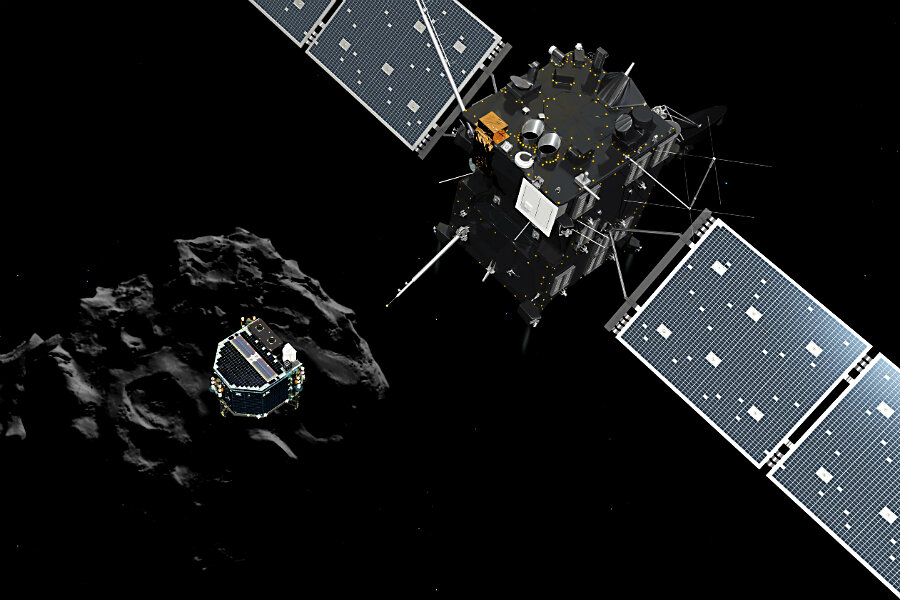One final risky mission for Rosetta: Landing on a comet
Loading...
Rosetta, the first orbiter sent to a comet, is extending its mission until September 2016, with the intention of eventually landing on the surface of the Comet 67P/Churyumov-Gerasimenko.
The spacecraft was launched in 2004 and arrived at Comet 67P/Churyumov-Gerasimenko ten years later. Since then, it has been studying the comet’s nucleus and and environment as the space rock moves along its 6.5 year orbit, drawing closer to the sun. The comet will make its closest approach to the sun on August 13, 2015.
The mission was originally funded through the end of December 2015, but was given another nine months on Tuesday by the European Space Agency’s Science Programme Committee. After that time, as the comet moves further away from the sun, there won’t be sufficient solar power to run Rosetta’s set of scientific instrumentation.
“This is fantastic news for science,” Matt Taylor, ESA’s Rosetta Project Scientist, said in a statement. “We’ll be able to monitor the decline in the comet’s activity as we move away from the Sun again, and we’ll have the opportunity to fly closer to the comet to continue collecting more unique data. By comparing detailed ‘before and after’ data, we’ll have a much better understanding of how comets evolve during their lifetimes.”
The extended nine months will give scientists a fuller picture of how a comet’s activity waxes and wanes along its orbit, and will provide additional context for complementary Earth-based observations of the comet, the ESA says.
The team also plans to use what they've learned about the comet so far to carry out some new and potentially slightly riskier investigations in the extra time, such as flights across the night-side of the comet to observe the plasma, dust, and gas interactions in the region and collect dust samples ejected close to the nucleus.
The ESA hopes to end the mission by landing Rosetta on the comet, “but there is still a lot to do to confirm that this end-of-mission scenario is possible," says Patrick Martin, Rosetta Mission Manager, in a statement.
If the landing is possible, Rosetta's instruments would be able to gather unique data from an unprecedentedly close distance, the ESA says.
Rosetta is the mothership to Philae, the first ever probe to achieve a "soft" landing on a comet. Philae successfully landed on Comet 67P/Churyumov-Gerasimenko in November 2014, but bounced and tumbled around the comet’s surface after its harpoons failed to deploy, eventually landing in a shadowy spot where it was unable to recharge its solar-powered batteries.
Some 57 hours after landing, Philae went into hibernation. Last week, it awoke and made contact with Rosetta after months of silence. Rosetta's additional nine months may also provide an opportunity for scientists to make a definitive visual identification of Philae, the ESA says.






